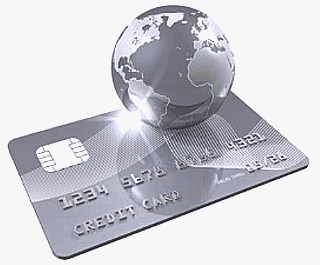Accredited InvestorsAltcoinAnatoli UnitskyAnti-Money Laundering (AML) In CryptoAPIArbitrageArtCoin TokenArticle DirectoryASICAuction Terminology GlossaryBasics of Stock Market InvestingBear MarketBest Crypto Payment Provider In the WorldBitcoinBlockchainBlockchain ConfirmationBlockchain Consensus MechanismBlockchain ForkBlockchain GlossaryBored Ape Yacht ClubBuild a Business That OutperformsBull MarketBuying SkyWay SharesByzantine Fault Tolerance (BFT) ExplainedCasascius CoinCentral Bank Digital Currency (CBDC)Centralized Crypto ExchangeCoinCoinsetCold WalletCollateralCommodity Futures Trading Commission (CFTC)Cross-Chain TechnologyCRUCrypto ExchangeCrypto GlossaryCrypto JokesCrypto Terms to KnowCrypto TickerCryptocurrencyCryptographyCryptojackingCryptounit BlockchainCryptounit GlossaryCryptounit ProgramdApp (Decentralized Application)Dead CoinDecentralized Exchange (DEX)Decentralized Finance (DeFi)Difference Between Bitcoin and EthereumDifferent Ways of Investing MoneyDigital CurrencyDistributed LedgerDo Your Own Research (DYOR)Dollar Cost Averaging (DCA)Dow Jones Industrial Average (DJIA)EncryptionERC-20ERC-721EthereumEvoScentFear Of Missing Out (FOMO)Fear, Uncertainty and Doubt (FUD)Fiat MoneyFNT Fintech CompanyGenesis BlockGlobal Unit PayGlossary of Banking TermsGlossary of Business TermsGlossary of Financial TermsHalvingHODLHot WalletHow Do I Start InvestingHow Rich is Satoshi Nakamoto?How to Create a BlockchainHow to Find Private InvestorsHow to Get Into FintechHow to Program Smart ContractsI Am Thrilled to Be a Part of This Global ProjectInitial Coin Offering (ICO)Initial Public Offering (IPO)Initial Token Offering (ITO)Innovation Basalt TechnologyInnovative Transportation TechnologiesInternational Bank Account Number (IBAN)Investing in Gold Mining StocksInvesting in Gold MiningJagerJoy of Missing Out (JOMO)Know Your Customer (KYC)LedgerLiquidity in CryptocurrencyMaker and Taker Fees in Crypto TradingMarket Capitalization (Market Cap)Meme CoinMetal Credit CardMetaMaskMillenials Now Have Access to Generational WealthMy Best Investment EverNew Digital EvolutionNFT GlossaryOff-Chain TransactionsOn-Chain TransactionsOpen Edition NFTPeer-to-Peer (P2P)Personal Loan GlossaryProbably the Best STO on the MarketProof of Stake (PoS)Real Estate Glossary of TermsReal Estate Investing GlossaryRebase TokenSecurities and Exchange Commission (SEC)Security Token ExchangesSecurity Token Offering (STO)Soulbound Decentralized Identities for Security TokensSoulbound ID Launch by Stobox Proves a SuccessSoulbound TokensStoboxStock Market GlossaryTestimonialsTether Platform and Token (USDT)UnitEx ExchangeUnitsky String TechnologiesUNTBUSDUValidatorWe Started Investing When We Were 25What are Blue Chip NFT?What are Blue Chip Stocks?What are Crypto Assets?What are Crypto Smart Contracts?What are CryptoPunks NFT?What are Digital Assets?What are Digital Collectibles?What are Gas Fees?What are Gas Wars?What are Hashmasks?What are Non Fungible Tokens?What are Non-Sufficient Funds (NSF)?What are Soulbound Tokens (SBT)?What are Stablecoins in Crypto?What are Transactions Per Second (TPS)?What are Utility NFTs?What are Utility Tokens?What Does Burning Crypto Mean?What Does Diamond Hands Mean?What Does Paper Hands Mean?What Does To The Moon Mean?What Does WAGMI Mean?What Happened to Satoshi Nakamoto?What is a 51% Attack?What is a Baby Boomer?What is a Backlink?What is a Banner?What is a Barcode?What is a Bid-Ask Spread in Crypto?What is a Block in Blockchain?What is a Block Reward?What is a Blockchain Address?What is a Blockchain Node?What is a Blockchain Oracle?What is a Blog?What is a Bond?What is a Bot?What is a Broker?What is a Business Accelerator?What is a Cash Cow?What is a Commercial Bank?What is a Commodity?What is a Con?What is a Credit?What is a Credit Limit?What is a Credit Rating?What is a Crypto Airdrop?What is a Crypto Bridge?What is a Crypto Scam?What is a Crypto Token?What is a Crypto Wallet?What is a Crypto Whale?What is a Crypto Winter?What is a Cryptocurrency Public Ledger?What is a Cryptocurrency Roadmap?What is a DAO?What is a Dark Pool?What is a Day Trader?What is a Dead Cat Bounce?What is a Default?What is a Derivative?What is a Digital Credit Card?What is a Fiscal Quarter?What is a Fungible Token?What is a Governance Token?What is a Grace Period?What is a Hard Fork?What is a Hot Wallet?What is a Hybrid Blockchain?What is a Hybrid PoW/PoS?What is a Joint Account?What is a Market Cap?What is a Merkle Tree in Blockchain?What is a Mining Farm?What is a Nonce? What is a PFP NFT?What is a POS System?What is a Prepaid Card?What is a Private Blockchain?What is a Private Key?What is a Public Blockchain?What is a Public Key?What is a Reserve Currency?What is a Ring Signature?What is a Routing Number?What is a Rug Pull in Crypto?What is a Safe Deposit Box?What is a Satoshi?What is a Security Token?What is a Seed Phrase?What is a Shitcoin?What is a Sidechain?What is a Soft Fork?What is a Spot Market?What is a State Bank?What is a SWIFT Code?What is a Tax Identification Number (TIN)?What is a Time Deposit?What is a Transaction Account?What is a Variable Interest Rate?What is a Virtual Assistant (VA)?What is a Virtual Card?What is a Virtual Currency?What is a Visa Card?What is a Whitelist in Crypto?What is a Whitepaper?What is Accounts Payable (AP)?What is AMA in Crypto?What is Amortization?What is an Accrual?What is an ACH Transfer?What is an Actuary?What is an Addendum?What is an Algorithm?What is an Angel Investor?What is an Annuity?What is an Asset?What is an ATM?What is an Atomic Swap?What is an Audit?What is an Avatar?What is an EIN?What is an Embargo?What is an Entrepreneur?What is an IDO (Initial Dex Offering)?What is an Interest Rate?What is an Internet cookie?What is an Investment Bank?What is an NFT Drop?What is an NFT Floor Price?What is an Ommer Block?What is an Orphan Block?What is an Outstanding Check?What is an Overdraft?What is Artificial Intelligence (AI)?What is B2B (Business-to-Business)?What is B2G (Business-to-Government)?What is Bartering?What is Bitcoin Dominance?What is Bitcoin Pizza Day?What is Blockchain Immutability?What is Blockchain Used For?What is BRICS?What is Business-to-Consumer (B2C)?What is C2C (Customer to Customer)?What is Capitalism?What is Catfishing?What is CFD Trading?What is Check Kiting?What is Cloud Mining?What is Communism?What is Content Marketing?What is Decentralization in Blockchain?What is DeFi in Crypto?What is Delisting?What is Depreciation?What is Digital Marketing?What is Diversification?What is Double Spending?What is Dumb Money?What is Dumping?What is Earnings Per Share (EPS)?What is Economics?What is Email Marketing?What is Equity?What is Etherscan?What is Fintech?What is Foreign currency?What is Forex?What is Fundamental Analysis (FA)?What is GameFi?What is Generative Art NFT?What is Gwei?What is Hard Currency?What is Hash Rate?What is Hashing in Blockchain?What is Inflation?What is Initial Game Offering (IGO)?What is Interest?What is Interest Income?What is Mainnet?What is Mastercard?What is Metaverse in Crypto?What is Mining in Cryptocurrency?What is Minting NFT?What is Mobile Banking?What is Money Laundering?What is NFT Alpha?What is NFT Metadata?What is NFT Rarity?What is NGMI Meaning?What is Nominal Interest Rate?What is Online Banking?What is Open-End Credit?What is OpenSea NFT Marketplace?What is Personal Identification Number (PIN)?What is Play-to-Earn?What is Polygon?What is Proof of Authority (PoA)?What is Proof of Work (PoW)?What is Public Key Cryptography?What is Pump and Dump?What is Quantum Computing?What is Refinancing?What is Retail Banking?What is Ripple?What is Sharding?What is Slippage in Crypto?What is Smart Money?What is Solvency?What is Soulbound ID?What is SSL?What is Staking in Cryptocurrency?What is Technical Analysis (TA)?What is Testnet?What is the Ask Price?What is the Better Business Bureau (BBB)?What is the Bid Price?What is the Dark Web?What is the InterPlanetary File System (IPFS)?What is the Gold Standard?What is the Lightning Network?What is the Prime Rate?What is the Sandbox?What is the Secondary Market?What is the World Bank?What is Tier 1 Capital?What is Tokenomics?What is TRC-20?What is Universal Banking?What is Unspent Transaction Output (UTXO)?What is Usury?What is Volatility in Crypto?What is Wash Trading?What is Web3?What is Whisper?What is XRP?What is Zero-Knowledge Proof (ZKP)?Who is Beeple?Who is Satoshi Nakamoto?Who is Vitalik Buterin?Why Tokenization is a Safe HavenWhy You Should Try Your Hand at Trading
Metal Credit Card
- Home
- Glossary of Banking Terms
- Metal Credit Card
Credit cards have come a long way since their inception.

They were initially made of plastic and had a simple design, but over time, credit card issuers have introduced new designs and materials to create more exclusive and prestigious cards. One such type of credit card is the metal credit card.
What is a Metal Credit Card?
A metal card is a type of credit card that is made of metal rather than plastic. The card is typically made of materials such as stainless steel or titanium, which gives it a more luxurious and exclusive feel. Metal credit cards are often heavier than plastic cards, and they have a different texture and sound when swiped or inserted into a payment terminal.
One of the most significant differences between a metal credit card and a regular credit card is the annual fee. Metal credit cards often come with a higher annual fee than plastic cards. This is because metal credit cards typically offer more exclusive benefits and rewards to their cardholders. For example, some metal credit cards may offer premium travel benefits, such as airport lounge access or complimentary hotel stays.
Another significant difference between metal credit cards and regular credit cards is the credit limit. Metal credit cards often have a higher credit limit than plastic cards. This is because metal credit cards are typically reserved for people with excellent credit scores and high income levels. The higher credit limit allows cardholders to make larger purchases and enjoy more significant benefits.
One of the benefits of having a metal credit card is the exclusivity and status it provides. Metal credit cards are often associated with luxury and prestige, and having one can signal to others that you have a high income level and excellent credit score. Some metal credit cards also come with concierge services, which can help cardholders with tasks such as booking travel or finding event tickets.
Another benefit of having a metal credit card is the added durability. Metal credit cards are more durable than plastic cards and are less likely to crack or break. This can be particularly useful for people who use their credit card frequently or for those who travel frequently.
History of Metal Credit Cards
Metal credit cards are a relatively recent innovation in the world of credit cards. The first metal credit card was introduced by American Express in 1999, and it was called the Centurion Card or the "Black Card."
The Centurion Card was initially offered to American Express's most elite customers, who spent at least $250,000 a year on their Amex cards. The card was made of anodized titanium and had a black finish, giving it a sleek and exclusive appearance. The card came with a hefty annual fee of $1,000 and offered a range of exclusive benefits and rewards, such as personal concierge service, airport lounge access, and travel benefits.
The success of the Centurion Card prompted other credit card companies to introduce their own metal credit cards. JPMorgan Chase introduced the Chase Sapphire Preferred Card in 2011, which was made of stainless steel and offered premium travel benefits and rewards. In 2016, JPMorgan Chase launched the J.P. Morgan Reserve Card, made of palladium and 23-karat gold, which had an annual fee of $595 and offered a range of exclusive benefits.
In recent years, metal credit cards have become more mainstream, with issuers offering metal versions of their popular cards. For example, American Express now offers metal versions of its Platinum Card and Gold Card, while Chase offers metal versions of its Sapphire Preferred and Sapphire Reserve Cards.
The Pros and Cons of Metal Credit Cards
When it comes to credit cards, the material they're made of might not be the most important factor to consider. However, if you're thinking about applying for a metal credit card, it's important to weigh the pros and cons first. While factors like APR, bonuses, and rewards should still take priority, here are a few things to keep in mind about metal credit cards.
One of the most obvious benefits of metal credit cards is their durability. Unlike plastic cards, which can easily bend or snap, metal cards are sturdier and can withstand accidental damage better. They're also less likely to have the printed information fade over time. While they're not completely indestructible, metal cards have a higher chance of surviving an accidental trip through the washing machine or other mishaps.
Metal credit cards also have a luxurious feel that some people appreciate. Whether it's the surprise factor of using an unusual card or the sleek look and feel of the metal, many credit card users enjoy the added sense of prestige that comes with a metal card.
However, there are also a few downsides to consider. While metal credit cards are sturdier, this also means that they can be harder to dispose of. Unlike plastic cards that can easily be cut up or shredded, metal cards may require special handling or even be returned to the issuer for secure destruction.
Another potential con is that metal credit cards may set off metal detectors, depending on the sensitivity of the detector. While this is not usually an issue at airport security checkpoints, it's something to keep in mind when traveling or visiting places with metal detectors.
Related Articles

What is an Investment Bank?
Commercial banks primarily provide banking services to individuals and businesses, such as deposit accounts, loans, and credit cards.

What is Mastercard?
Co-branded Mastercards are credit cards that are offered jointly by Mastercard and another company, such as a retailer or a hotel chain.

What is an ATM?
Crypto ATMs allow users to buy or sell cryptocurrencies, such as Bitcoin, Ethereum, and others, using cash or debit/credit cards.

What is a CVV Number?
One such card is the American Express or Amex card. Unlike Visa, Mastercard, and Discover, which all have a three-digit CVV, Amex cards have a four-digit code printed on the front of the card, above the...
- Home
- Glossary of Banking Terms
- Metal Credit Card